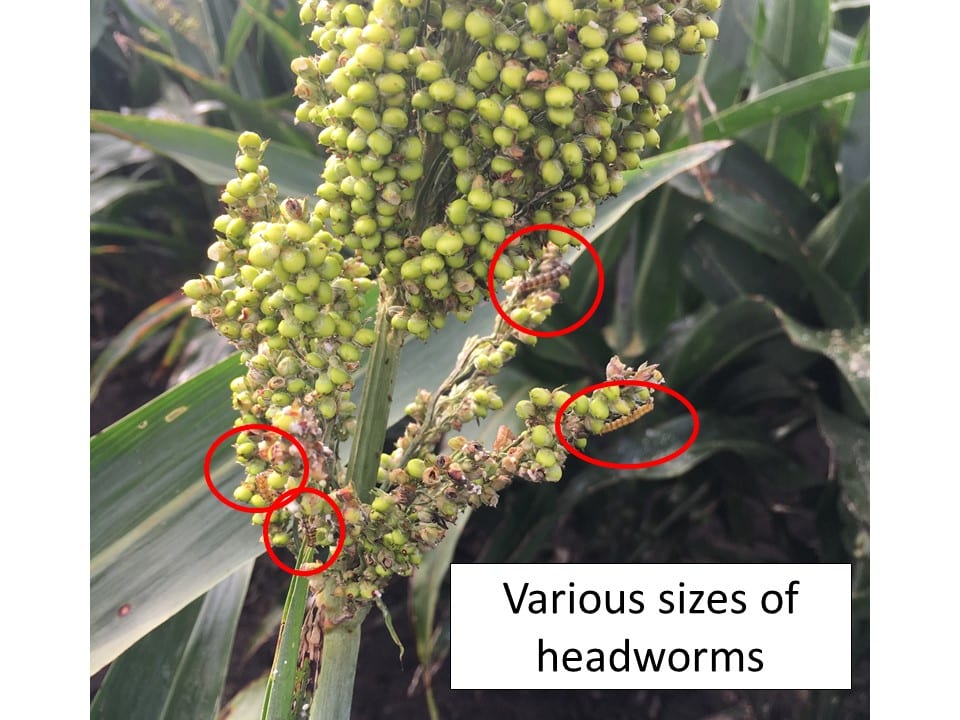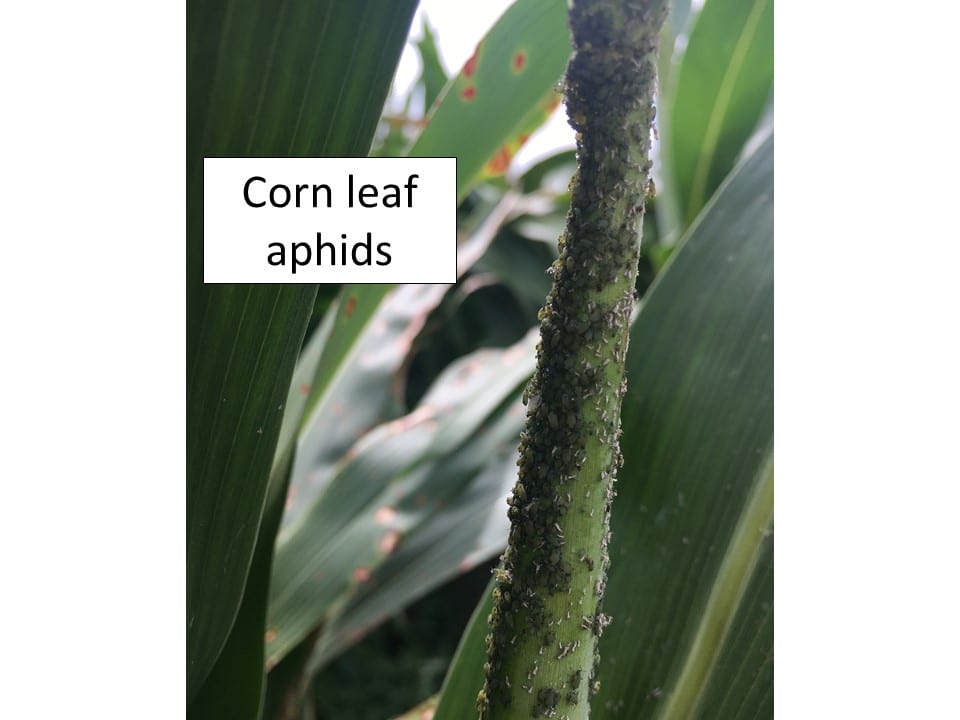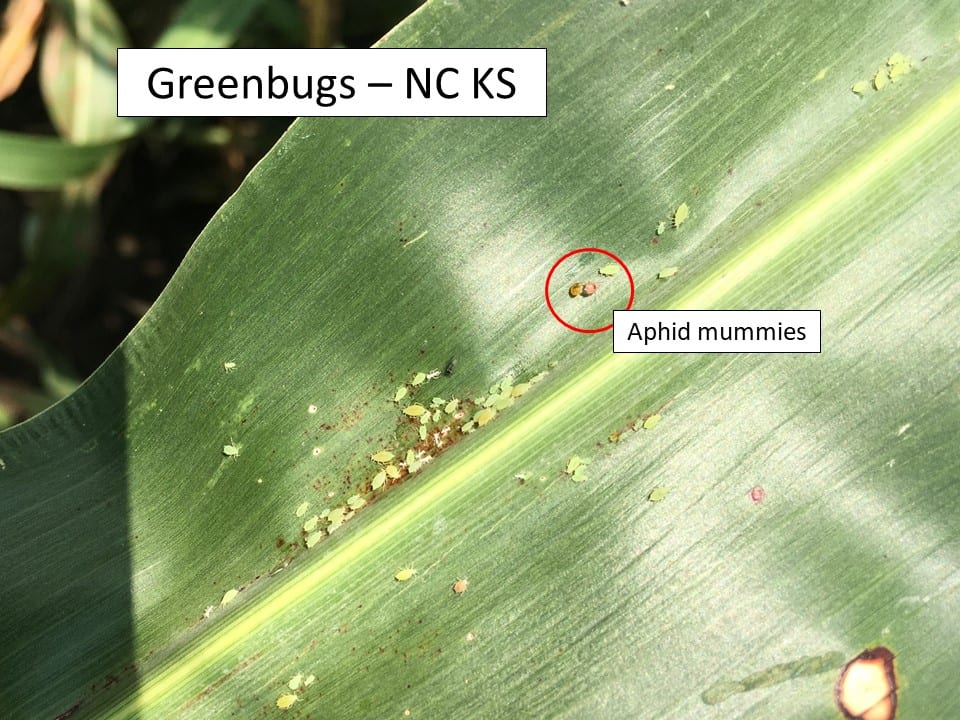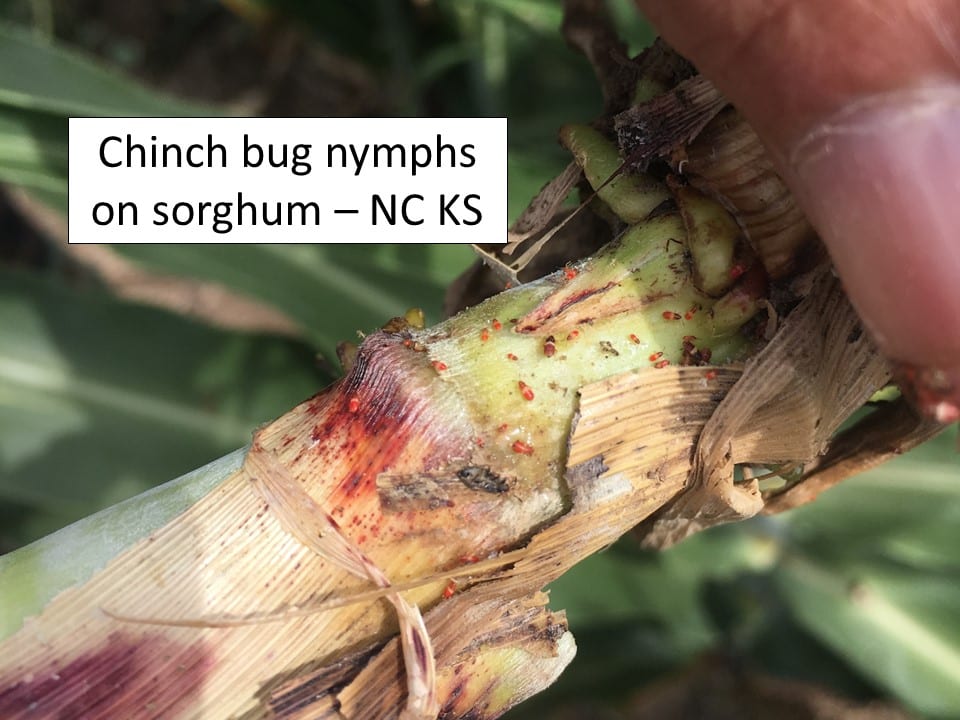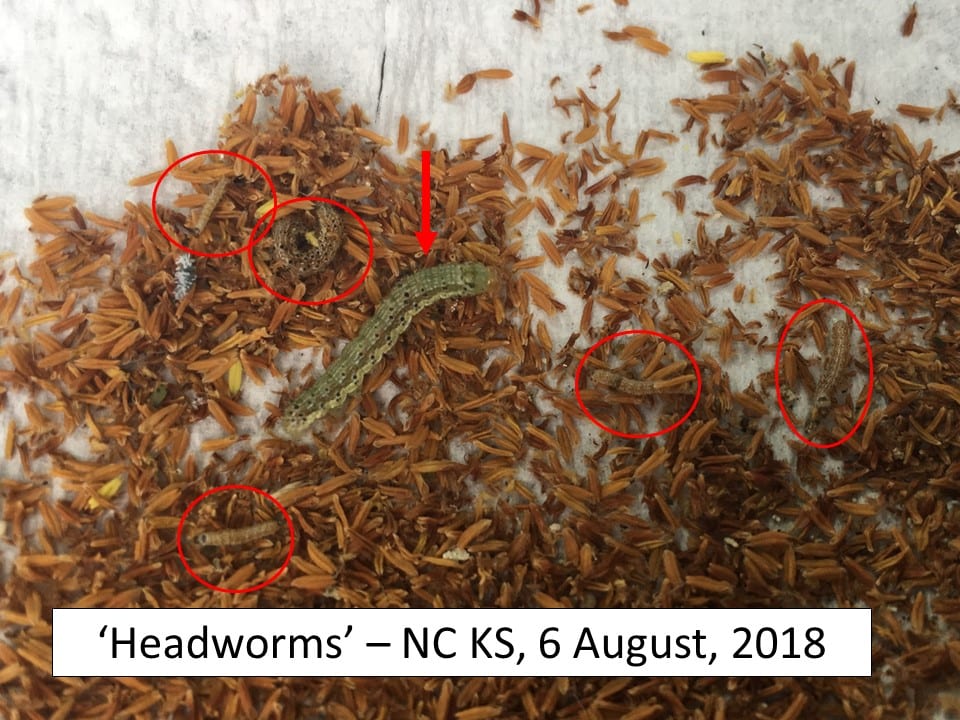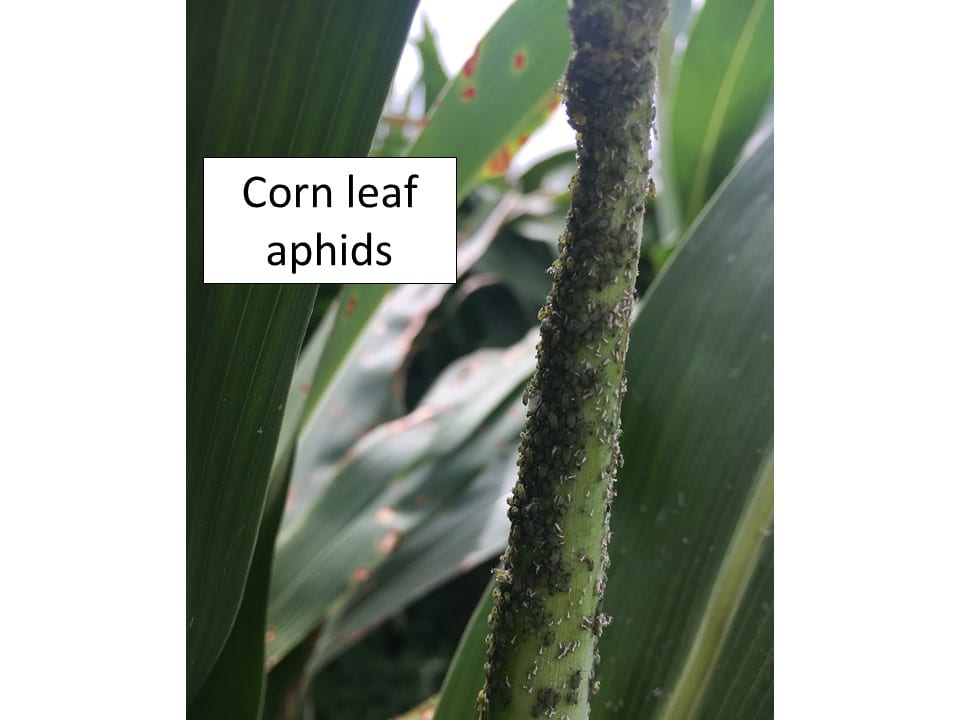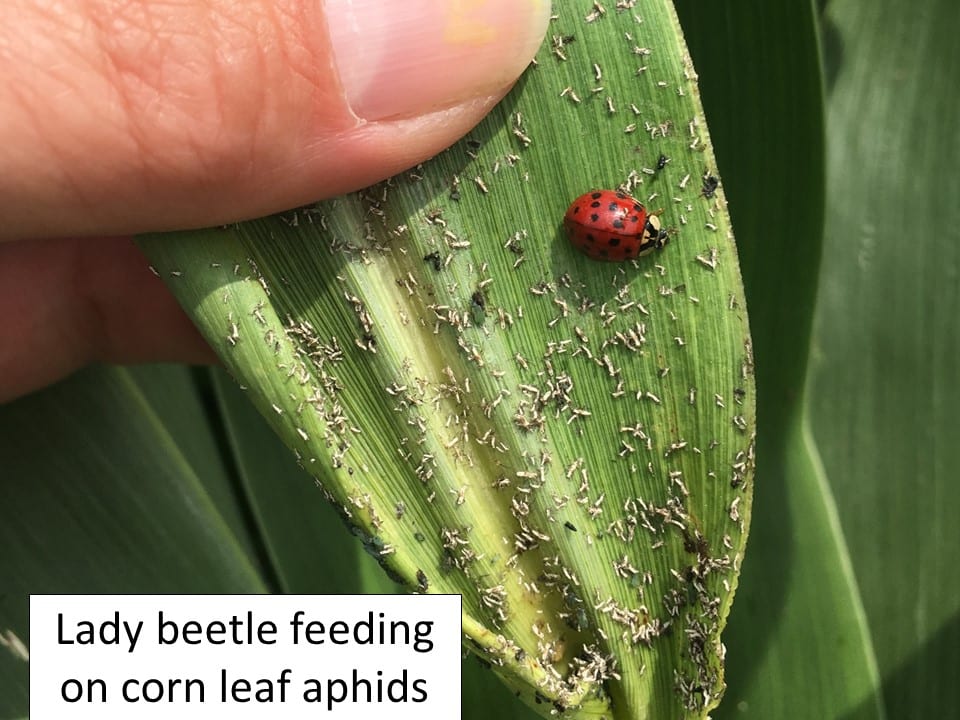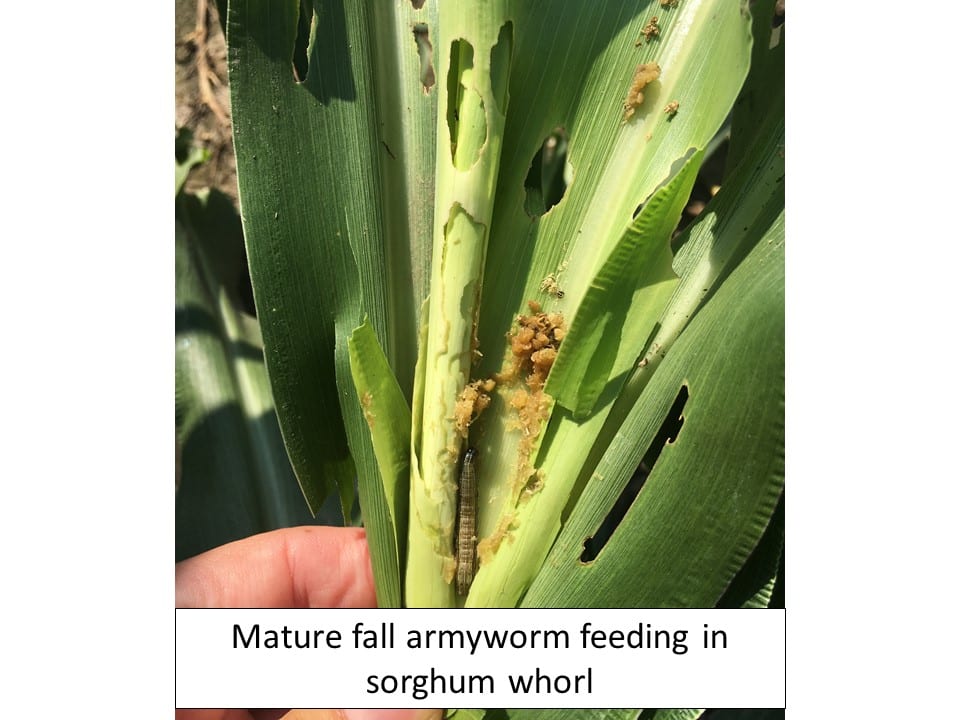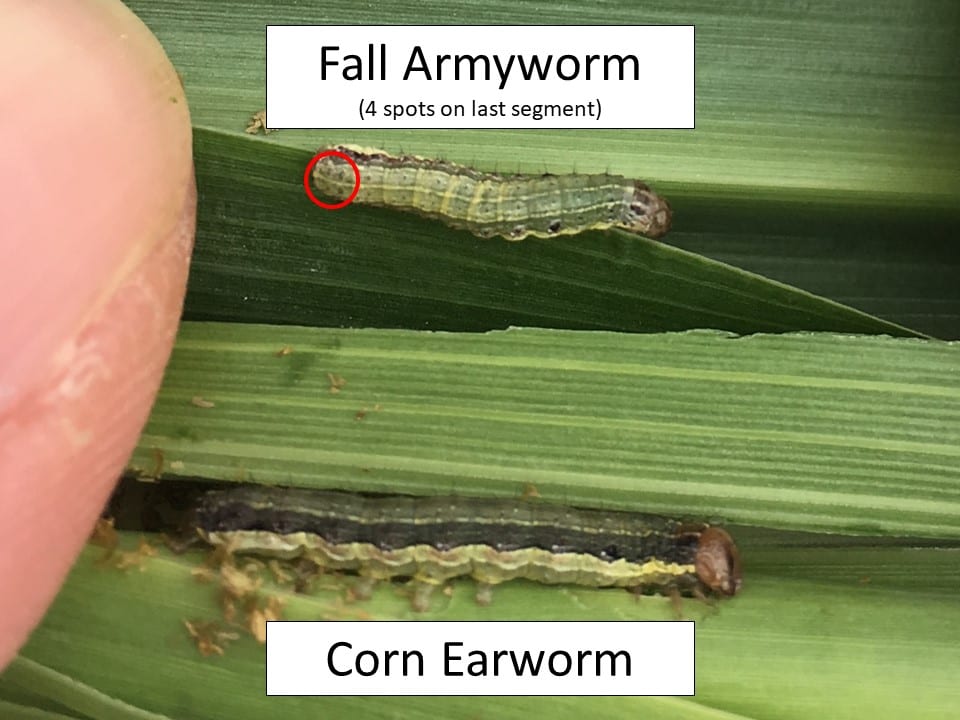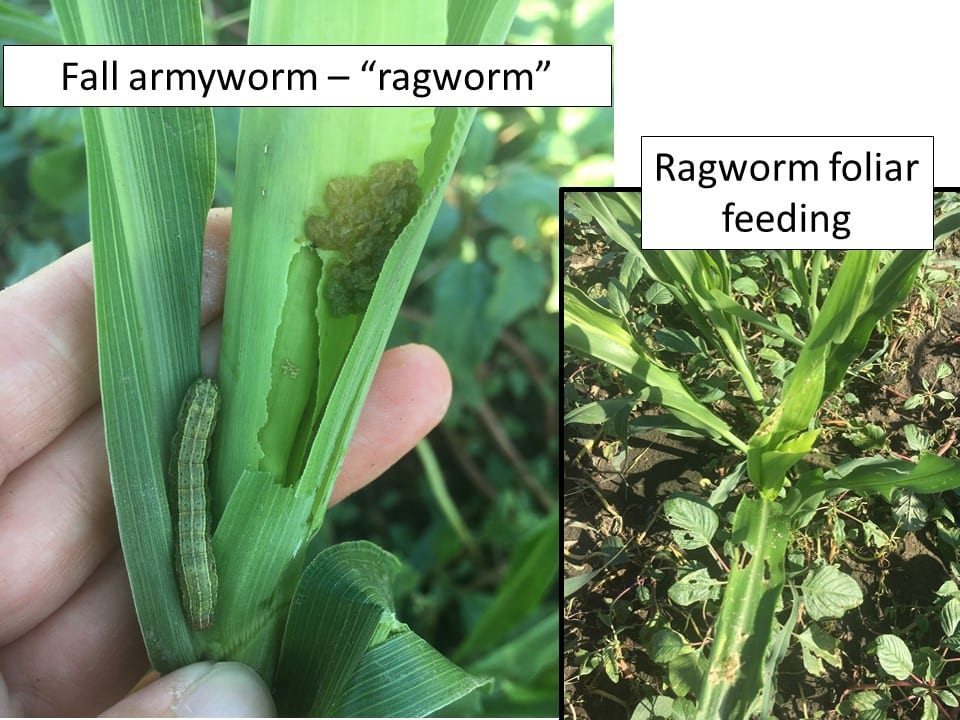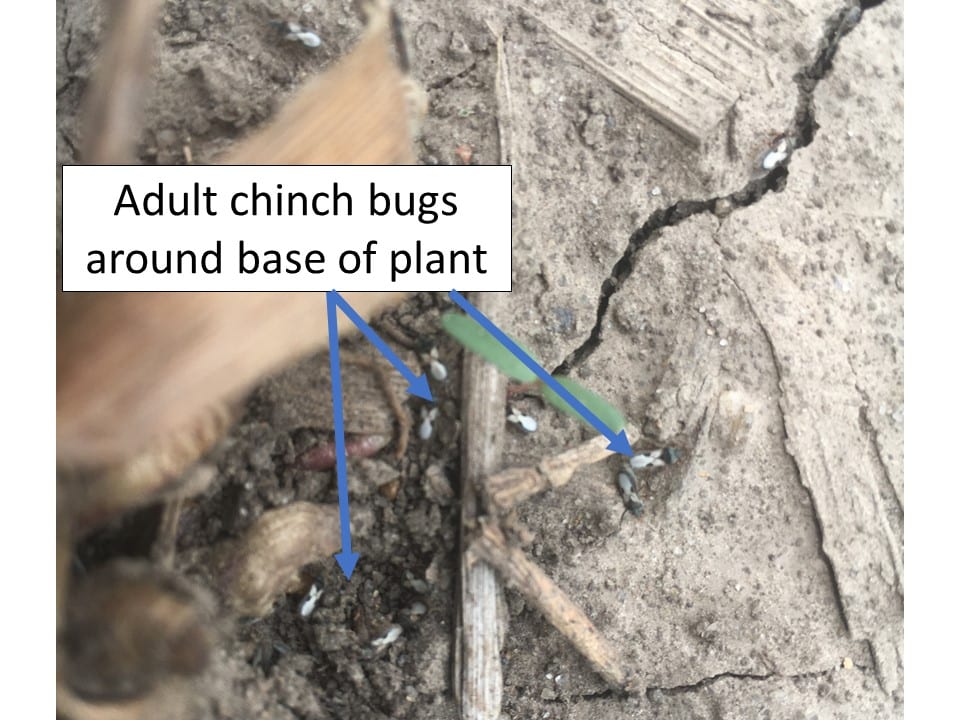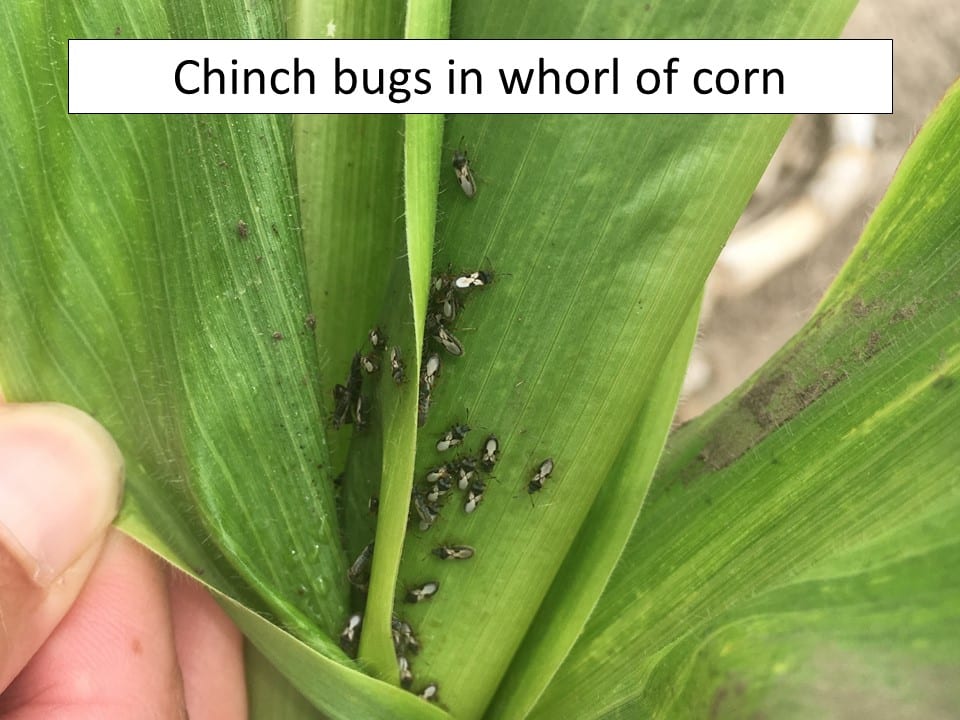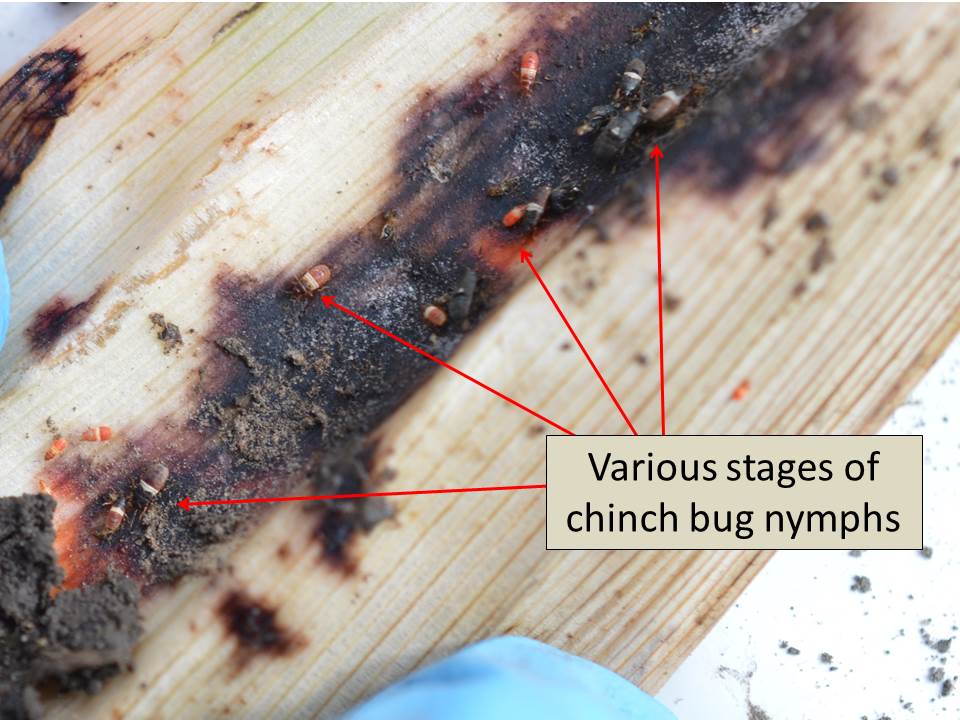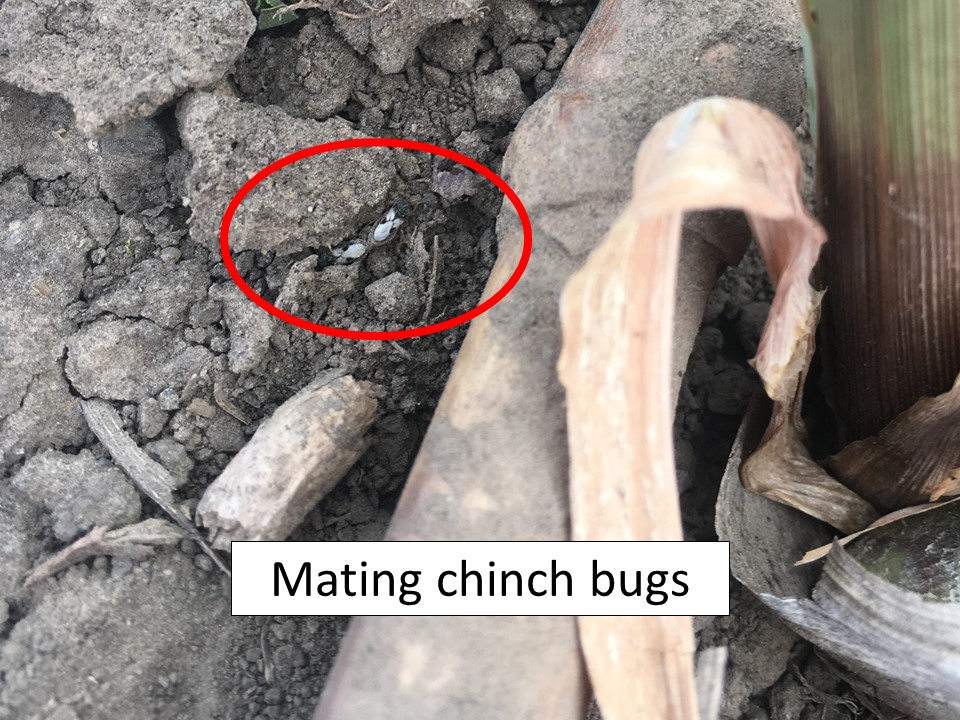–by Dr. Jeff Whitworth and Dr. Holly Davis
Late planted sorghum is still causing considerable concern throughout north central Kansas as the leaves grow out of the whorl and are significantly ‘chewed up’ looking. These ‘ragworms’, primarily corn earworms and fall armyworms but also a few cattail caterpillars, are still active in younger plants.
As these plants reach reproductive stages, i.e. flowering, there will be a high probability of having ‘headworms’ (corn earworms and fall armyworms) infesting the kernels. Sorghum heads are the most vulnerable between flowering and soft dough. There are currently significant infestations of these headworms throughout north central Kansas with worms in various stages of development. Headworms cause approximately 5% loss per worm, per head.
There are large numbers of corn leaf aphids, greenbugs, and even a few yellow sugarcane aphids around north central Kansas. The first report of a sugarcane aphid colony from Saline Co. was made on 16 August. These aphids are attracting, and providing food for, large numbers of beneficials which seem to be keeping aphids relatively well controlled. Insecticide applications have not been needed for aphids. More information on sugarcane aphids in Kansas can be found at My Fields: https://www.myfields.info/pests/sugarcane-aphid


